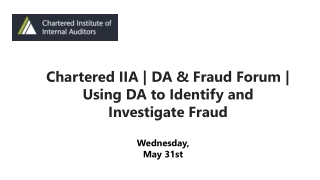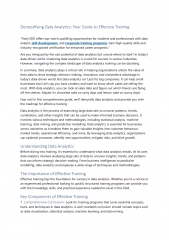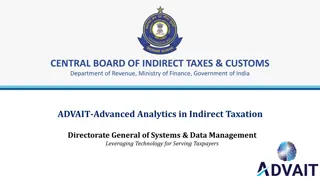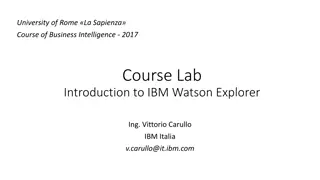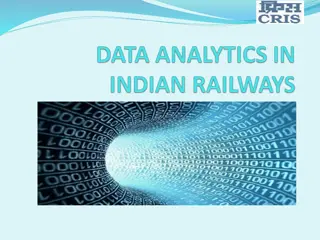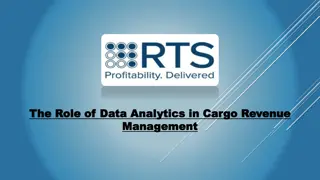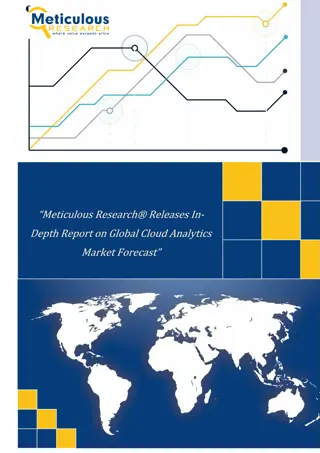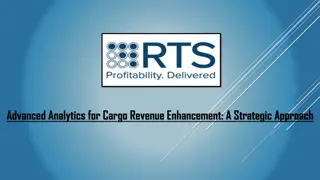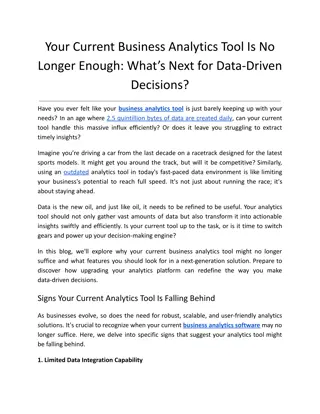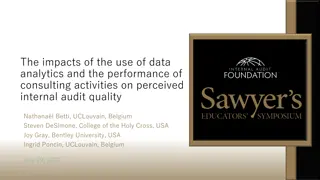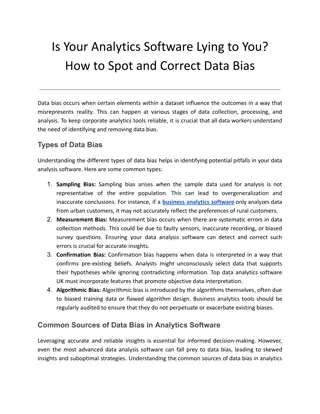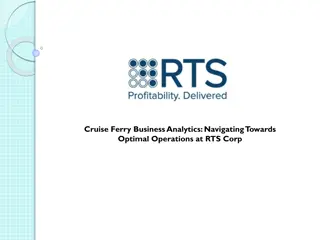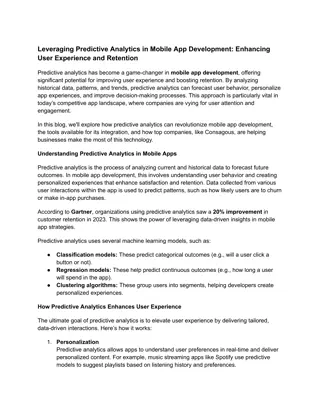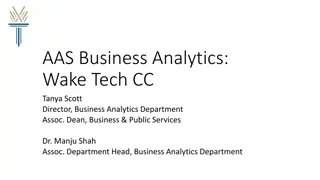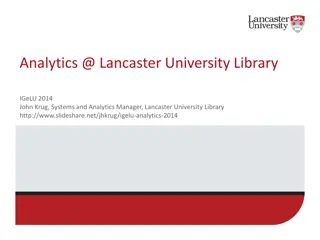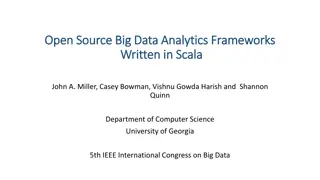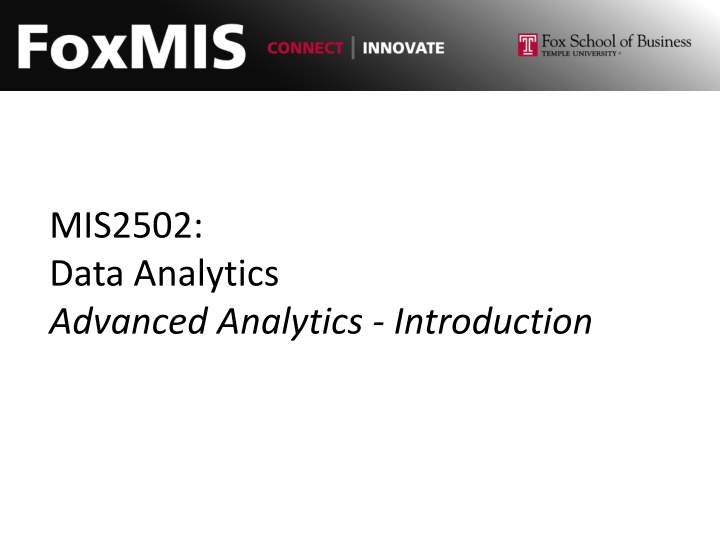
Evolution of Data Analytics: From Data Mining to Predictive Analytics
Discover the journey of data analytics from basic data entry to advanced predictive analytics. Learn about the information architecture of organizations, the difference between OLAP and data mining, the evolution of advanced data analytics, and the origins of data mining. Explore how data analytics has evolved to answer complex business questions using enabling technologies and characteristics.
Download Presentation

Please find below an Image/Link to download the presentation.
The content on the website is provided AS IS for your information and personal use only. It may not be sold, licensed, or shared on other websites without obtaining consent from the author. If you encounter any issues during the download, it is possible that the publisher has removed the file from their server.
You are allowed to download the files provided on this website for personal or commercial use, subject to the condition that they are used lawfully. All files are the property of their respective owners.
The content on the website is provided AS IS for your information and personal use only. It may not be sold, licensed, or shared on other websites without obtaining consent from the author.
E N D
Presentation Transcript
MIS2502: Data Analytics Advanced Analytics - Introduction
The Information Architecture of an Organization Now we re here Data entry Data Data analysis extraction Transactional Database Analytical Data Store Stores real-time transactional data Stores historical transactional and summary data
The difference between OLAP and data mining OLAP can tell you what is happening, or what has happened like a pivot table Analytical Data Store Data mining can tell you why it is happening, and help predict what will happen The (dimensional) data warehouse feed both like what we ll do with SAS
The Evolution of Advanced Data Analytics Evolutionary Step Business Question Enabling Technologies Characteristics Data Collection (1960s) "What was my total revenue in the last five years?" Storage: Computers, tapes, disks Retrospective, static data delivery Data Access (1980s) "What were unit sales in New England last March?" Relational databases (RDBMS), Structured Query Language (SQL) Retrospective, dynamic data delivery at record level Data Warehousing/ Decision Support (1990s) "What were unit sales in New England last March? On-line analytical processing (OLAP), dimensional databases, data warehouses Retrospective, dynamic data delivery at multiple levels Now drill down to Boston? Data Mining and Predictive Analytics (2000s and beyond) "What s likely to happen to Boston unit sales next month? Why?" Advanced algorithms, parallel computing, massive databases Prospective, proactive information delivery
Origins of Data Mining Draws ideas from Artificial intelligence Pattern recognition Statistics Database systems Traditional techniques may not work because of Sheer amount of data High dimensionality Heterogeneous, distributed nature of data Artificial intelligence Data Mining Database systems Pattern recognition Statistics
Data Mining and Predictive Analytics is Exploration and analysis of large data sets to discover meaningful patterns Extraction of implicit, previously unknown, and potentially useful information from data
What data mining is not Sales analysis What are the sales by quarter and region? How do sales compare in two different stores in the same state? If these aren t data mining examples, then what are they ? Profitability analysis Which is the most profitable store in Pennsylvania? Which product lines are the highest revenue producers this year? Sales force analysis Which salesperson produced the most revenue this year? Does salesperson X meet this quarter s target?
Data Mining Tasks Use some variables to predict unknown or future values of other variables Likelihood of a particular outcome Prediction Methods Description Methods Find human-interpretable patterns that describe the data from Fayyad et al., Advances in Knowledge Discovery and Data Mining, 1996
Case Study A marketing manager for a brokerage company Problem: High churn (customers leave) Turnover (after 6 month introductory period) is 40% Customers get a reward (average: $160) to open an account Giving incentives to everyone who might leave is expensive Getting a customer back after they leave is expensive
a solution One month before the end of the introductory period, predict which customers will leave Offer those customers something based on their future value Ignore the ones that are not predicted to churn
Data Mining Tasks Descriptive Clustering Association Rule Discovery Sequential Pattern Discovery Visualization Predictive Classification Regression Neural Networks Deviation Detection
Decision Trees Used to classify data according to a pre-defined outcome Based on characteristics of that data http://www.mindtoss.com/2010/01/25/five-second-rule-decision-chart/ Uses Predict whether a customer should receive a loan Flag a credit card charge as legitimate Determine whether an investment will pay off
A more realistic one Will a customer buy some product given their demographics? What are the characteristics of customers who are likely to buy? http://onlamp.com/pub/a/python/2006/02/09/ai_decision_trees.html
Clustering Used to determine distinct groups of data Based on data across multiple dimensions Here you have four clusters of web site visitors. Uses Customer segmentation Identifying patient care groups Performance of business sectors What does this tell you? http://www.datadrivesmedia.com/two-ways-performance-increases-targeting-precision-and-response-rates/
Association Mining Find out which items predict the occurrence of other items my+REWARDS CARD Application Also known as affinity analysis or market basket analysis Uses What products are bought together? Amazon s recommendation engine Telephone calling patterns
Bottom line In large sets of data, these patterns aren t obvious And we can t just figure it out in our head We need analytics software We ll be using SAS to perform these three analyses on large sets of data

